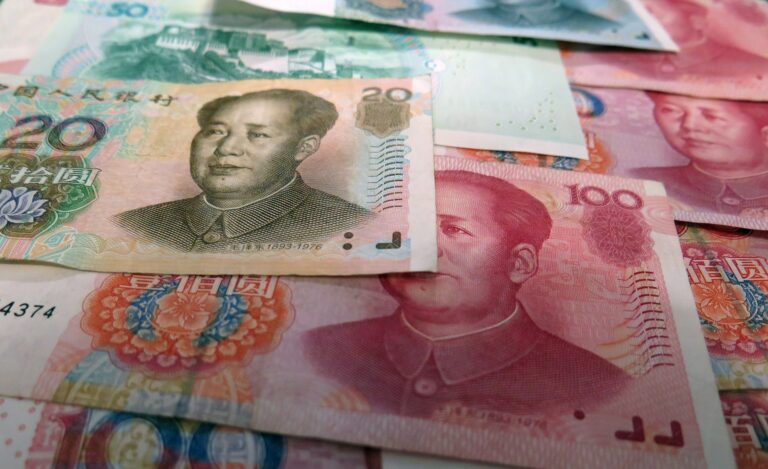
In a revealing update from Russia’s central bank, it’s become clear that amidst ongoing international tensions, the Chinese yuan is emerging as a crucial asset for Russia’s reserve holdings. According to a Bloomberg News article published on March 29, the Russian financial authority has expressed a lack of viable alternatives to the yuan following the economic repercussions of the Kremlin’s actions in Ukraine and subsequent international sanctions.
Bloomberg highlights that, per the central bank’s annual report, options for reserve currencies are notably thin on the ground for Russia, given the precarious nature of financial instruments from nations maintaining a friendly stance towards it. Issues cited include the high volatility of these alternative currencies, their markets’ low liquidity, and capital movement restrictions within these countries, all contributing to the yuan’s prominence in Russia’s reserve strategy.
This development underscores the shifting dynamics in Russia’s economic relations, as noted by Bloomberg. With the West turning its back through sanctions in response to the Ukraine conflict, Russia has increasingly leaned towards Asia—most notably China—to sustain its economy. The burgeoning trade relationship with China has played a pivotal role in enabling Russia to navigate the economic challenges posed by Western sanctions, alongside bolstered government expenditure.
<!–
–>
An interesting tidbit from Bloomberg’s coverage reveals the yuan’s ascension in Russia’s financial ecosystem; it has overtaken the US dollar as the most frequently traded currency. This marks a significant shift from the period prior to the start of the Russia-Ukraine conflict when the yuan’s presence in Russian markets was virtually unnoticed.
Furthermore, Bloomberg reports that as of March 22, Russia’s international reserves were valued at $590.1 billion, reflecting a $40 billion decrease over two years of conflict. This figure includes $300 billion in assets frozen by Western nations—a situation the Russian central bank is actively seeking to navigate, asserting ownership rights over these blocked reserves.
Despite the sanctions and asset freezes, Russia’s reserve values experienced a marginal increase in 2023, primarily attributed to the rising price of gold, as detailed by Bloomberg. In a move towards opacity, the Russian central bank has ceased disclosing the specific makeup of its international reserves since the war began, opting instead to report only on the proportions of gold and foreign currency held.
Featured Image via Pixabay
- SEO Powered Content & PR Distribution. Get Amplified Today.
- PlatoData.Network Vertical Generative Ai. Empower Yourself. Access Here.
- PlatoAiStream. Web3 Intelligence. Knowledge Amplified. Access Here.
- PlatoESG. Carbon, CleanTech, Energy, Environment, Solar, Waste Management. Access Here.
- PlatoHealth. Biotech and Clinical Trials Intelligence. Access Here.
- Source: https://www.cryptoglobe.com/latest/2024/03/russias-central-bank-bets-on-chinese-yuan-amid-sanctions-squeeze/
- :has
- :is
- :not
- 1
- 2023
- 22
- 29
- a
- According
- actions
- actively
- Ads
- All
- alongside
- alternative
- alternatives
- amidst
- and
- annual
- ARE
- article
- AS
- Asserting
- asset
- Assets
- assets frozen
- At
- authority
- back
- Bank
- become
- began
- Billion
- blocked
- Bloomberg
- bolstered
- burgeoning
- by
- capital
- central
- Central Bank
- challenges
- China
- chinese
- Chinese Yuan
- cited
- clear
- conflict
- contributing
- countries
- coverage
- crucial
- CryptoGlobe
- currencies
- Currency
- decrease
- detailed
- Development
- Disclosing
- Dollar
- dynamics
- Economic
- economy
- ecosystem
- emerges
- emerging
- enabling
- experienced
- expressed
- Figure
- financial
- Financial Instruments
- following
- For
- foreign
- foreign currency
- frequently
- friendly
- from
- frozen
- given
- Gold
- Government
- Ground
- Held
- High
- highlights
- Holdings
- HTTPS
- image
- in
- include
- includes
- Increase
- increasingly
- instead
- instruments
- interesting
- International
- issues
- IT
- ITS
- jpg
- Lack
- Liquidity
- Low
- Maintaining
- makeup
- March
- Markets
- most
- move
- movement
- Nations
- Nature
- Navigate
- news
- notably
- of
- on
- ongoing
- only
- Options
- over
- ownership
- per
- period
- pivotal
- plato
- Plato Data Intelligence
- PlatoData
- played
- posed
- presence
- price
- primarily
- Prior
- prominence
- published
- reflecting
- relations
- relationship
- repercussions
- report
- Reports
- Reserve
- reserves
- response
- restrictions
- revealing
- Reveals
- rights
- rising
- Role
- Russia
- russian
- s
- Sanctions
- Screen
- screens
- seeking
- shift
- SHIFTING
- significant
- since
- situation
- sizes
- specific
- stance
- start
- Strategy
- subsequent
- tensions
- that
- The
- The West
- their
- These
- thin
- this
- Through
- to
- towards
- trade
- traded
- Turning
- two
- Ukraine
- Ukraine conflict
- underscores
- Update
- us
- US Dollar
- use
- valued
- Values
- via
- viable
- virtually
- Volatility
- war
- was
- were
- West
- Western
- when
- with
- within
- years
- Yuan
- zephyrnet













